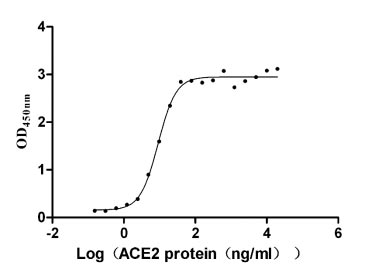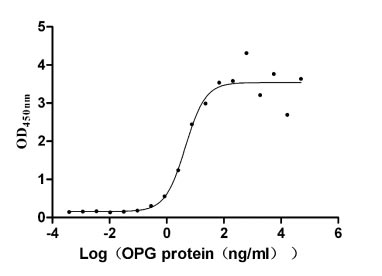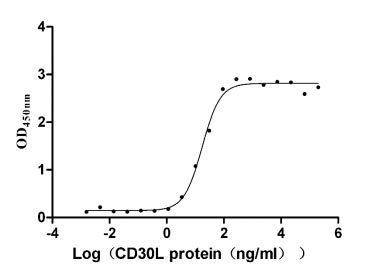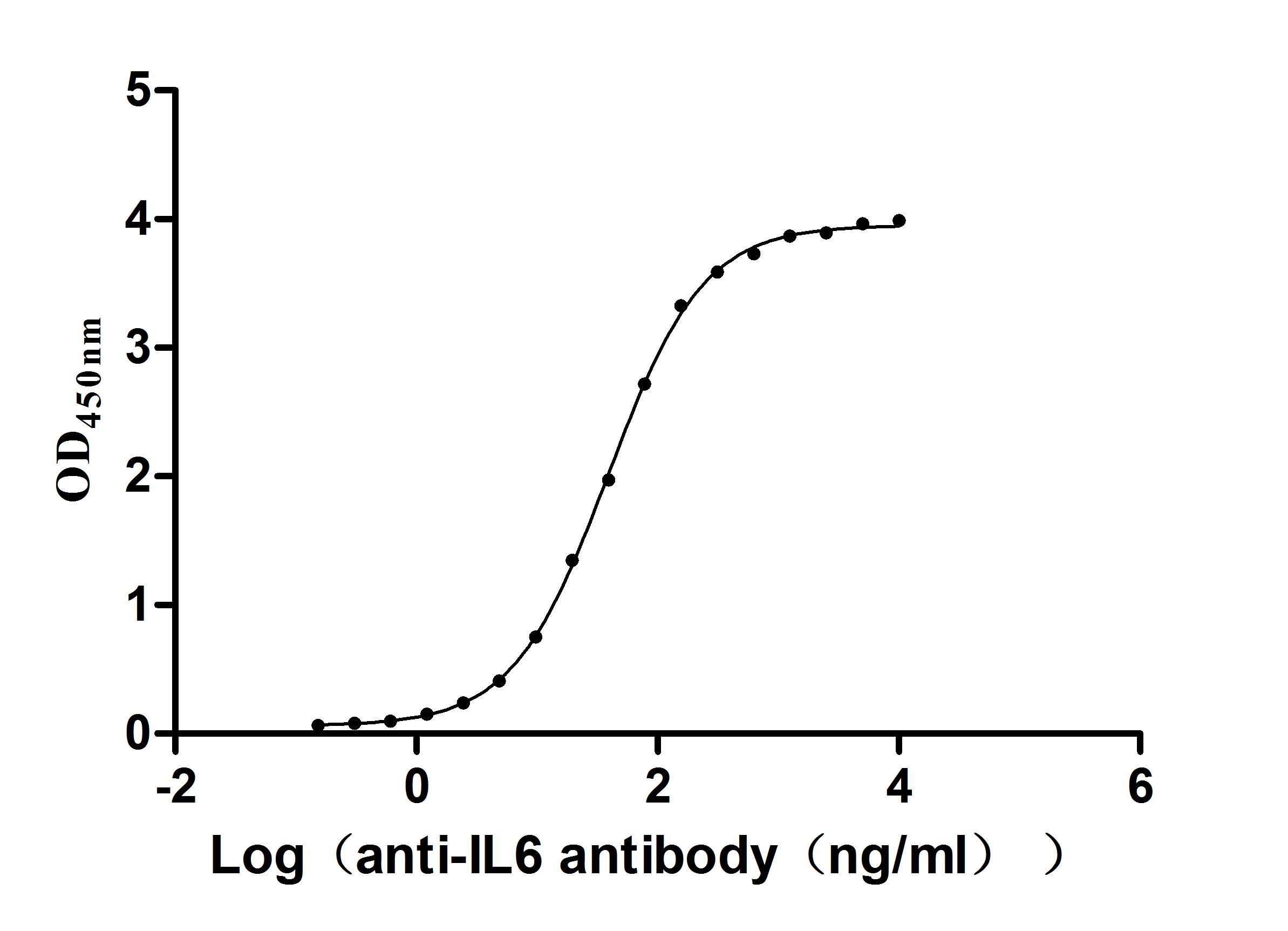Recombinant Mouse DNA excision repair protein ERCC-1 (Ercc1)
-
货号:CSB-YP007769MO
-
规格:
-
来源:Yeast
-
其他:
-
货号:CSB-EP007769MO
-
规格:
-
来源:E.coli
-
其他:
-
货号:CSB-EP007769MO-B
-
规格:
-
来源:E.coli
-
共轭:Avi-tag Biotinylated
E. coli biotin ligase (BirA) is highly specific in covalently attaching biotin to the 15 amino acid AviTag peptide. This recombinant protein was biotinylated in vivo by AviTag-BirA technology, which method is BriA catalyzes amide linkage between the biotin and the specific lysine of the AviTag.
-
其他:
-
货号:CSB-BP007769MO
-
规格:
-
来源:Baculovirus
-
其他:
-
货号:CSB-MP007769MO
-
规格:
-
来源:Mammalian cell
-
其他:
产品详情
-
纯度:>85% (SDS-PAGE)
-
基因名:
-
Uniprot No.:
-
别名:Ercc1; Ercc-1DNA excision repair protein ERCC-1
-
种属:Mus musculus (Mouse)
-
蛋白长度:Full length protein
-
表达区域:1-298
-
氨基酸序列MDPGKDEESR PQPSGPPTRR KFVIPLEEEE VPCAGVKPLF RSSRNPTIPA TSAHVAPQTY AEYAITQPPG GAGATVPTGS EPAAGENPSQ TLKTGAKSNS IIVSPRQRGN PVLKFVRNVP WEFGEVIPDY VLGQSTCALF LSLRYHNLHP DYIHERLQSL GKNFALRVLL VQVDVKDPQQ ALKELAKMCI LADCTLVLAW SAEEAGRYLE TYKAYEQKPA DLLMEKLEQN FLSRATECLT TVKSVNKTDS QTLLATFGSL EQLFTASRED LALCPGLGPQ KARRLFEVLH EPFLKVPR
-
蛋白标签:Tag type will be determined during the manufacturing process.
The tag type will be determined during production process. If you have specified tag type, please tell us and we will develop the specified tag preferentially. -
产品提供形式:Lyophilized powder
Note: We will preferentially ship the format that we have in stock, however, if you have any special requirement for the format, please remark your requirement when placing the order, we will prepare according to your demand. -
复溶:We recommend that this vial be briefly centrifuged prior to opening to bring the contents to the bottom. Please reconstitute protein in deionized sterile water to a concentration of 0.1-1.0 mg/mL.We recommend to add 5-50% of glycerol (final concentration) and aliquot for long-term storage at -20℃/-80℃. Our default final concentration of glycerol is 50%. Customers could use it as reference.
-
储存条件:Store at -20°C/-80°C upon receipt, aliquoting is necessary for mutiple use. Avoid repeated freeze-thaw cycles.
-
保质期:The shelf life is related to many factors, storage state, buffer ingredients, storage temperature and the stability of the protein itself.
Generally, the shelf life of liquid form is 6 months at -20°C/-80°C. The shelf life of lyophilized form is 12 months at -20°C/-80°C. -
货期:Delivery time may differ from different purchasing way or location, please kindly consult your local distributors for specific delivery time.Note: All of our proteins are default shipped with normal blue ice packs, if you request to ship with dry ice, please communicate with us in advance and extra fees will be charged.
-
注意事项:Repeated freezing and thawing is not recommended. Store working aliquots at 4°C for up to one week.
-
Datasheet :Please contact us to get it.
靶点详情
-
功能:Non-catalytic component of a structure-specific DNA repair endonuclease responsible for the 5'-incision during DNA repair. Responsible, in conjunction with SLX4, for the first step in the repair of interstrand cross-links (ICL). Participates in the processing of anaphase bridge-generating DNA structures, which consist in incompletely processed DNA lesions arising during S or G2 phase, and can result in cytokinesis failure. Also required for homology-directed repair (HDR) of DNA double-strand breaks, in conjunction with SLX4.
-
基因功能参考文献:
- chronic treatment of Ercc1(-/) mice with the mitochondrial-targeted radical scavenger XJB-5-131 attenuated oxidative DNA damage, senescence and age-related pathology. PMID: 29747066
- Dietary tryptophan restriction increased microbial diversity and made the gut microbiota composition of old Ercc1(-/Delta7) mice more similar to that of young WT mice. PMID: 27418353
- we quantified the frequency of aneuploidy of three autosomes in the cerebral cortex and cerebellum of adult and developing brain of Bub1b(H/H) mice, which have a faulty mitotic checkpoint, and Ercc1(-/Delta7) mice, defective in nucleotide excision repair and inter-strand crosslink repair. we found that Bub1b(H/H), but not Ercc1(-/Delta7) mice, have a significantly higher frequency of aneuploid nuclei relative to wild-t... PMID: 26681803
- these results establish USP45 as a new regulator of XPF-ERCC1 crucial for efficient DNA repair PMID: 25538220
- ERCC1 is critical for protecting chondrocytes from catabolic stress and is associated with the pathophysiology of osteoarthritis. PMID: 24964749
- SLX4 is a tumor suppressor, which activates XPF-ERCC1 nuclease specificity in DNA crosslink repair. PMID: 24726326
- ERCC1 is essential for melanoma growth and resistance to cisplatin. PMID: 21722328
- Smad4 loss-associated Snail reduction compromises Ercc1-mediated DNA repair, contributing to increased UV-induced skin carcinogenesis. PMID: 23648546
- analysis of accelerated loss of hearing and vision in the DNA-repair deficient Ercc1(delta/-) mouse PMID: 22257940
- This study demonistrated that the ERCC1 deficiency-associated downregulation of the cholesterol biosynthesis pathway is at least in part due to lowered expression of its master transcription factor SREBF2 PMID: 22245387
- These results show that mice, in which the defect in DNA repair is limited to neurons, develop an age-related impairment of context-dependent fear learning. PMID: 21880916
- we have identified a novel skin-specific Ercc1 transcript in mice that originates from a promoter approximately 400 bp upstream of the normal promoter, rather than from more distant potential transcriptional start sites. PMID: 20407824
- Ercc1(Delta/-) mice develop widespread astrocytosis and microgliosis, and motor neuron loss and denervation of skeletal muscle fibers. PMID: 20602234
- Performed metabolic profiling of serum and urine of the ERCC1(d/-) mouse, which has a modified ERCC1 gene, in comparison to wild type ERCC1 mice and in relation to aging by (1)H NMR spectroscopy. PMID: 20507129
- Results suggest that the repair functions of Ercc1 are required in both male and female germ cells at all stages of their maturation. PMID: 12466203
- ERCC1 is not required for immunoglobulin class switching PMID: 12713813
- Data reveal an unanticipated involvement of the ERCC1/XPF NER endonuclease in the regulation of telomere integrity. PMID: 14690602
- mitomycin C triggered sister chromatid exchanges in wild-type cells but chromatid fusions in Ercc1(-/-) and Xpf mutant cells, indicating that in their absence, repair of double-strand breaks(DSBs)is prevented. PMID: 15199134
- ERCC1 might be involved in processing or repair of DNA lesions in S regions during CSR. PMID: 15280420
- This alternate transcript is ubiquitous in human tissues and cancer cell lines, but is absent in mouse and thus does not appear to be cancer related. PMID: 15688021
- proliferative reserves of hematopoietic progenitors and stress erythropoiesis were significantly reduced in Ercc1-/- mice compared to age-matched controls PMID: 15692571
- In a skin-specific Ercc1 knockout, hairless mice were hypersensitive to UV irradiation and developed fasat-growing skin tumors early in actinic progression. Ercc1 has a key role in protecting against UV-induced skin cancer. PMID: 16682947
- no elevation in the levels of reactive oxygen species, or of malondialdehyde DNA adducts, a product of oxidative DNA damage, were found in Ercc1-deficient liver and no elevated levels of genes involved in the oxidative damage response were seen PMID: 17126084
- While some aspects of the Ercc1-deficient phenotype are indicative of functional neurodegeneration, we obtained no structural evidence for this. PMID: 18221731
- These data support the conclusion that, as in yeast, ERCC1-XPF facilitates double-strand breaks repair via an end-joining mechanism that is Ku86 independent. PMID: 18541667
显示更多
收起更多
-
亚细胞定位:Nucleus.
-
蛋白家族:ERCC1/RAD10/SWI10 family
-
数据库链接:
KEGG: mmu:13870
STRING: 10090.ENSMUSP00000003645
UniGene: Mm.280913
Most popular with customers
-
Recombinant Human SARS coronavirus Spike glycoprotein (S), partial (Active)
Express system: Mammalian cell
Species: Human SARS coronavirus (SARS-CoV) (Severe acute respiratory syndrome coronavirus)
-
Recombinant Human Tumor necrosis factor receptor superfamily member 11B (TNFRSF11B) (Active)
Express system: Mammalian cell
Species: Homo sapiens (Human)
-
Recombinant Human Tumor necrosis factor receptor superfamily member 8 (TNFRSF8), partial (Active)
Express system: Mammalian cell
Species: Homo sapiens (Human)
-
Recombinant Rat Microtubule-associated protein tau (Mapt) (Active)
Express system: Mammalian cell
Species: Rattus norvegicus (Rat)
-
Recombinant Macaca fascicularis Claudin (CLDN18)-VLPs (Active)
Express system: Mammalian cell
Species: Macaca fascicularis (Crab-eating macaque) (Cynomolgus monkey)
-
Recombinant Human Alkaline phosphatase, germ cell type (ALPG) (Active)
Express system: Mammalian cell
Species: Homo sapiens (Human)
-
Recombinant Mouse Gastric inhibitory polypeptide receptor (Gipr), partial (Active)
Express system: Mammalian cell
Species: Mus musculus (Mouse)
-




















